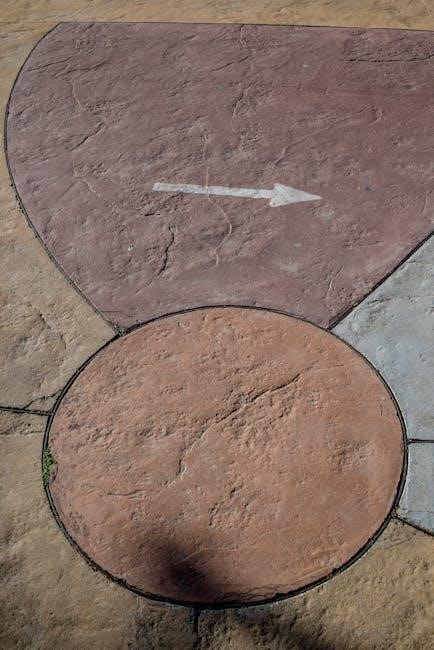The Manga Guide to Physics introduces physics concepts in an innovative format using manga cartoons and real-world examples to explain complex theories and principles clearly and concisely every day online.
Overview of the Book
The Manga Guide to Physics is a unique book that combines manga cartoons with physics concepts to create an engaging and easy-to-understand learning experience. The book is written by Professor Hideo Nitta, a faculty member in the Department of Physics at Tokyo Gakugei University, and illustrated by Keita Takatsu. The book was first published in Japanese in 2006 and later translated into English. The English language edition was published in 2009 by No Starch Press and Ohmsha Ltd. The book’s innovative format makes it an excellent resource for students who struggle with traditional physics textbooks. The use of manga cartoons and real-world examples helps to explain complex physics concepts in a clear and concise manner, making it an enjoyable read for students of all ages. The book’s content is well-organized and easy to follow, with each chapter building on the previous one to provide a comprehensive understanding of physics principles. Overall, The Manga Guide to Physics is an excellent resource for anyone looking to learn physics in a fun and engaging way. The book’s unique approach to learning physics has made it a popular choice among students and educators alike.
Main Characters and Plot
The main character of the book is Megumi, a talented athlete who excels in tennis but struggles with physics. She is helped by Ryota, a patient and knowledgeable physics student who uses real-world examples to explain complex concepts. Together, they explore the physics of everyday objects and activities, such as roller skates, slingshots, and tennis serves. The story follows Megumi’s journey as she learns to appreciate and understand physics, with Ryota’s guidance and support. The characters are well-developed and relatable, making the book an enjoyable read. The plot is engaging and easy to follow, with each chapter building on the previous one to provide a comprehensive understanding of physics principles. The use of a narrative storyline makes the book more appealing and accessible to readers who may struggle with traditional physics textbooks. The characters’ interactions and conversations add a personal touch to the book, making it more than just a physics textbook. The story is used to explain complex physics concepts in a clear and concise manner.

Classical Mechanics in the Manga Guide to Physics

Classical mechanics concepts are explained using manga and real-world examples clearly and concisely every day online with easy to understand language and illustrations always.
Momentum and Impulse
The concept of momentum and impulse is explained in the Manga Guide to Physics using real-world examples, such as the motion of roller skates and the force of a tennis serve. The manga format makes it easy to understand the relationship between force, mass, and velocity, and how they affect the motion of objects. The guide also explores the concept of impulse, which is the change in momentum of an object over a short period of time. By using simple and clear language, the manga guide helps readers to grasp the complex concepts of momentum and impulse, and how they apply to everyday situations. The use of manga illustrations and real-world examples makes the guide an engaging and effective way to learn about physics. The Manga Guide to Physics is a valuable resource for anyone looking to understand the fundamental principles of physics in an innovative and accessible way.
Parabolic Motion
The Manga Guide to Physics explains the concept of parabolic motion in a clear and concise manner, using examples such as the trajectory of a tennis ball or a projectile. The guide illustrates how the motion of an object under the influence of gravity can be described by a parabolic curve, and how the initial velocity and angle of launch affect the trajectory. The manga format makes it easy to visualize the concept of parabolic motion and understand the underlying physics. The guide also discusses the factors that affect the range and maximum height of a projectile, such as air resistance and the force of gravity. By using simple language and illustrations, the Manga Guide to Physics helps readers to understand the complex concept of parabolic motion and its applications in real-world situations. The guide provides a comprehensive and engaging introduction to the topic, making it accessible to readers of all levels.

Other Concepts Covered in the Book
The book covers various physics concepts using manga and real-world examples online daily always.
Force, Mass, and Energy
The Manga Guide to Physics explains force, mass, and energy in a unique and engaging way, using everyday examples to illustrate complex concepts. The book uses manga cartoons to break down difficult theories into easy-to-understand language, making it accessible to students of all levels. By using real-world examples, such as the force exerted on a tennis ball during a serve, the book helps readers understand the relationship between force, mass, and energy. The author, Hideo Nitta, uses a conversational tone to explain the laws of physics, making the subject feel less intimidating and more approachable. The book’s innovative format and use of manga illustrations make it an enjoyable and effective way to learn about force, mass, and energy. Overall, the book provides a comprehensive and engaging introduction to these fundamental concepts in physics, making it a valuable resource for students and learners alike, every day online.
Real-World Applications
The Manga Guide to Physics showcases real-world applications of physics concepts, making the subject more relatable and interesting to readers. The book uses examples from everyday life, such as roller skates, slingshots, and tennis serves, to illustrate how physics is used in various situations. By applying physics principles to real-world scenarios, the book helps readers understand the practical relevance of the subject. The author uses a variety of examples to demonstrate how physics is used in different fields, such as sports, transportation, and engineering. The book’s focus on real-world applications makes it an excellent resource for students who want to see the practical side of physics. The use of manga illustrations and conversational tone also makes the book an enjoyable read, allowing readers to learn about physics in a fun and engaging way, and appreciate its significance in everyday life, with many examples online.

Target Audience and Format
The manga guide is designed for college-level students, using an innovative format with manga cartoons to explain complex physics principles clearly and concisely every day online easily.
College-Level Students
The manga guide is specifically designed for college-level students who are struggling to understand complex physics concepts. Using a unique and innovative approach, the guide explains difficult theories and principles in a clear and concise manner. The manga format makes it easy for students to follow along and understand the material, as it is presented in a visually engaging and entertaining way. The guide is perfect for students who are looking for a supplement to their traditional textbook, or for those who are looking for a refresher on key concepts. By using real-world examples and manga cartoons, the guide helps students to develop a deeper understanding of physics and its applications. This approach has been shown to be highly effective in helping students to learn and retain complex information, making it an invaluable resource for college-level students studying physics. The guide is also useful for students who want to improve their understanding of physics.
Innovative Format
The Manga Guide to Physics features an innovative format that combines manga cartoons with scientific explanations to create an engaging and easy-to-understand learning experience. This unique approach makes complex physics concepts more accessible and fun to learn. The guide uses a storyline and characters to illustrate key principles and theories, helping readers to develop a deeper understanding of the subject. The manga format also allows for visual representations of complex concepts, making it easier for readers to visualize and comprehend the material. The innovative format of the guide has been praised for its ability to make learning physics an enjoyable and interactive experience. By using a combination of text and images, the guide is able to convey complex information in a clear and concise manner, making it an invaluable resource for students and learners of all ages. The format is also well-suited for readers who are looking for a refreshing alternative to traditional textbooks.
